Iraq
Photos
18 Photos
Per Page:
Filter Categories
All
Filters
Much of the sediment clouding the water in this image of the Persian Gulf is from the Shatt al Arab River, which enters the Gulf in the north along the Iran-Iraq border. The river drains the combined waters of the Euphrates and Tigris Rivers of Iraq, and the Karun River of Iran. Though other rivers empty into the Persian Gulf, most of its fresh water comes from the Shatt al Arab. On the right edge of the image is the narrow Strait of Hormuz, which connects the Persian Gulf to the Arabian Sea, part of the northern Indian Ocean. The Persian Gulf is flanked to the west by wedge-shaped Kuwait and by Saudi Arabia with its vast tan-, pink-, and white-sand deserts; to the south by Qatar, the United Arab Emirates, and Oman; and to the east by the dry mountains of Iran. The wetlands and rivers of Mesopotamia border the Gulf on the north. The red dots mark gas flares in oil fields of Iran and Iraq. Image courtesy of NASA.
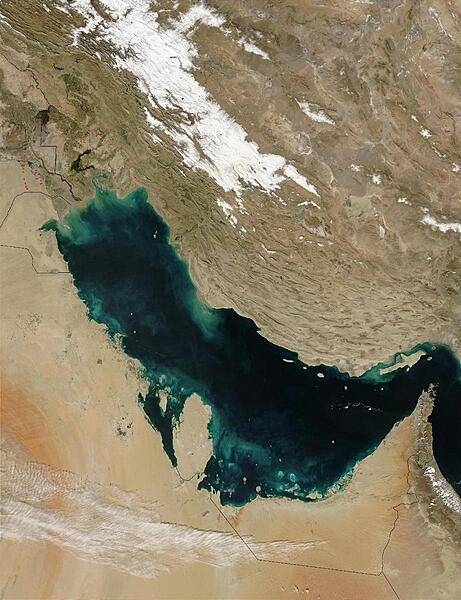
Soldiers and civilians prepare to enter the ancient city of Babylon for a tour. The entrance to the ruins is a reconstruction of the Ishtar Gate. The original gate - built by Nebuchadnezzar II in 575 B.C. and dedicated to Ishtar, the goddess of love and war - was dismantled by German archeologists in the early 20th century and reconstructed in the Pergamon Museum in Berlin. Photo courtesy of the US Department of Defense/ Sgt. Debralee Best.
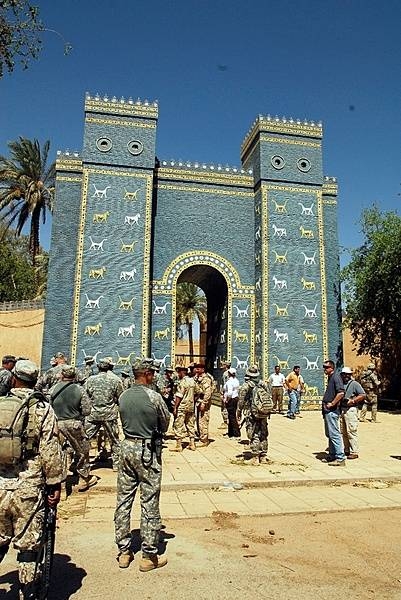
Soldiers stand guard within the walls of the ancient city of Babylon. Some of the ruins were reconstructed by Saddam Hussein. Photo courtesy of the US Department of Defense/ Sgt. Debralee Best.

View from Saddam Hussein's former summer palace showing the ruins of ancient Babylon in the background. Photo courtesy of the US Navy/ Arlo K. Abrahamson.
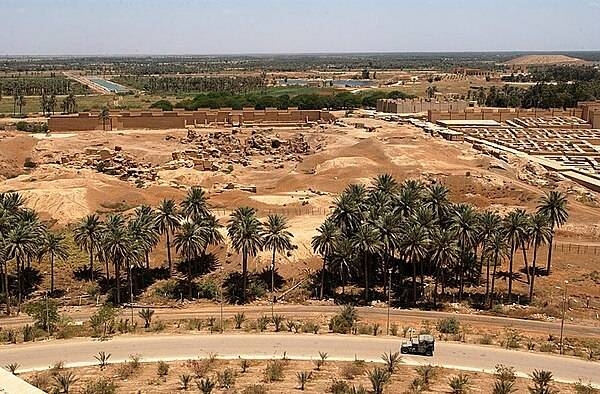
US Marines visiting the site of the rebuilt ruins of Babylon. Photo courtesy of the US Marine Corps/ Gunnery Sergeant Daniel O'Connell.
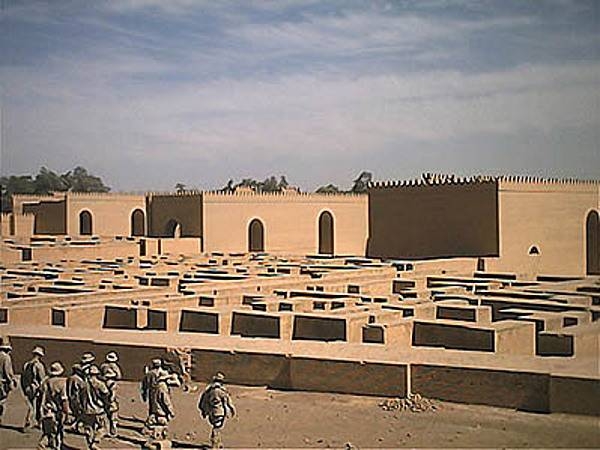
The Great Ziggurat of Ur stands after 4,000 years. Construction on the ziggurat was completed in the 21st century B.C. in the ancient Sumerian city of Ur near present-day Nasiriyah on the Euphrates River, about 370 km (225 mi) southeast of Baghdad. The ziggurat was part of a temple complex that served as an administrative center for the city, and that was also a shrine of the moon god Nanna, the patron deity of Ur. The site was extensively excavated between 1922 to 1934. Part of the facade of the lower stage and the ceremonial stairway were reconstructed by the regime of Saddam Hussein. Photo courtesy of the US Air Force / Tech. Sgt. Christopher Marasky.
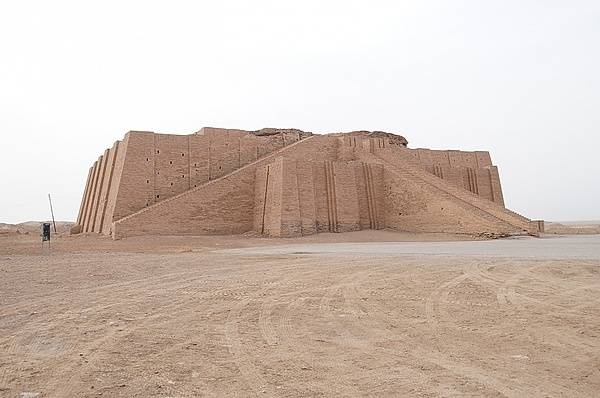
The Great Ziggurat at Ur as seen through the archway of a side building. Photo courtesy of the US Department of Defense/ Staff Sgt. Adelita Mead.
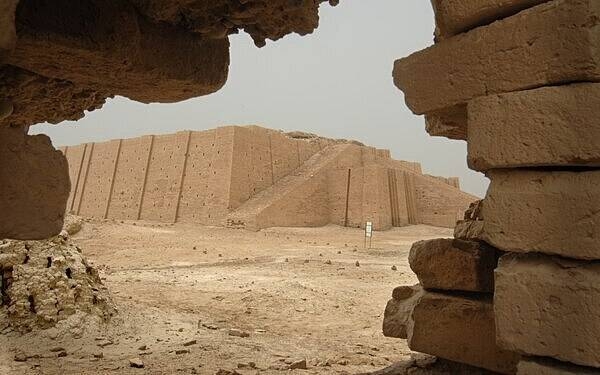
Closer view of the Great Ziggurat at Ur showing some of the architectural details. Photo courtesy of the US Department of Defense/ Spc. Chastity Boykin.
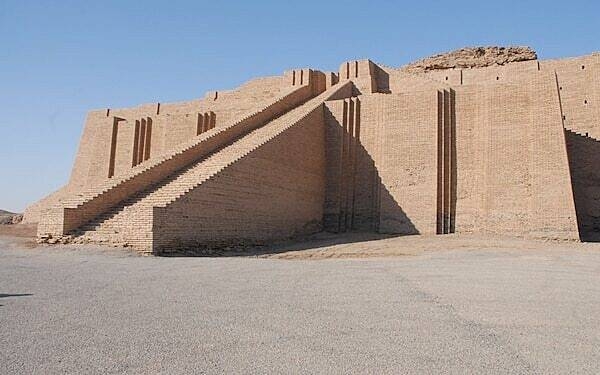
View looking up the main stairway of the Great Ziggurat at Ur. The solitary figure at the top gives some idea of the immensity of the structure. Photo courtesy of the US Department of Defense/ Spc. Samantha Ciaramitaro.
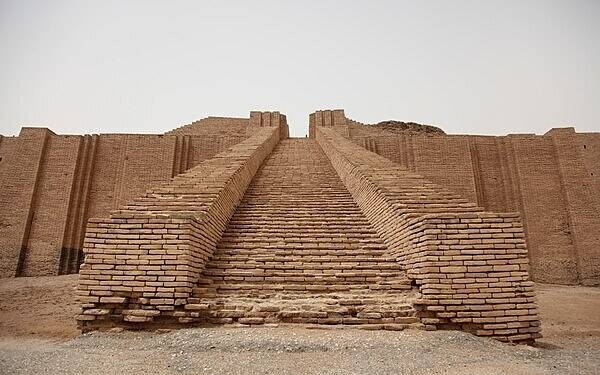
Front right side stairway of the Great Ziggurat at Ur. Photo courtesy of the US Department of Defense/ Pfc. J. P. Lawrence.
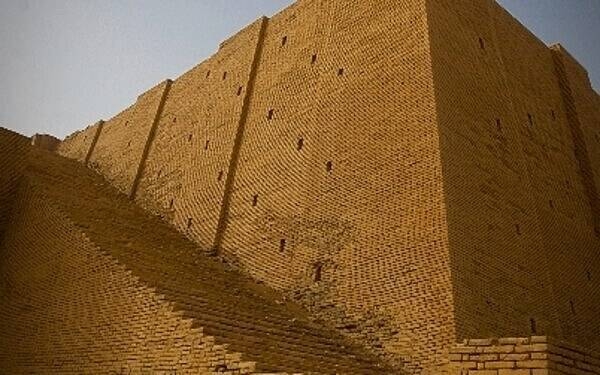
The Great Ziggurat at Ur viewed from a Black Hawk helicopter. Photo courtesy of the US Department of Defense/ Spc. Ernest Sivia III.
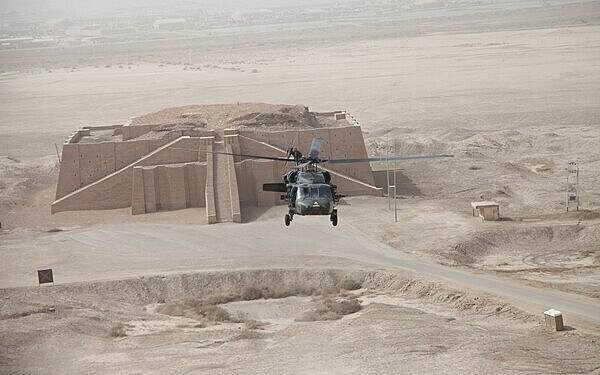
Aerial view of the ruins of the ancient city of Hatra, located approximately 290 km (180 mi) northwest of Baghdad. Hatra was a strongly fortified caravan city and capital of the small Kingdom of Hatra, located between the Parthian and Roman Empires. Hatra flourished during the 2nd century A.D., but was destroyed and deserted in the 3rd century. Its impressive ruins were discovered in the 19th century. Photo courtesy of the US Department of Defense / Sgt. 1st Class Wendy Butts.
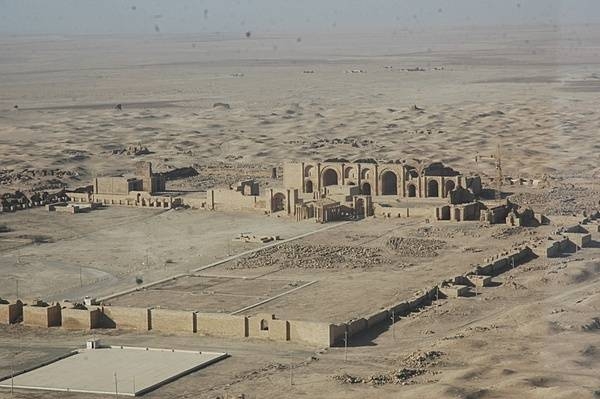
Page 01 of 02